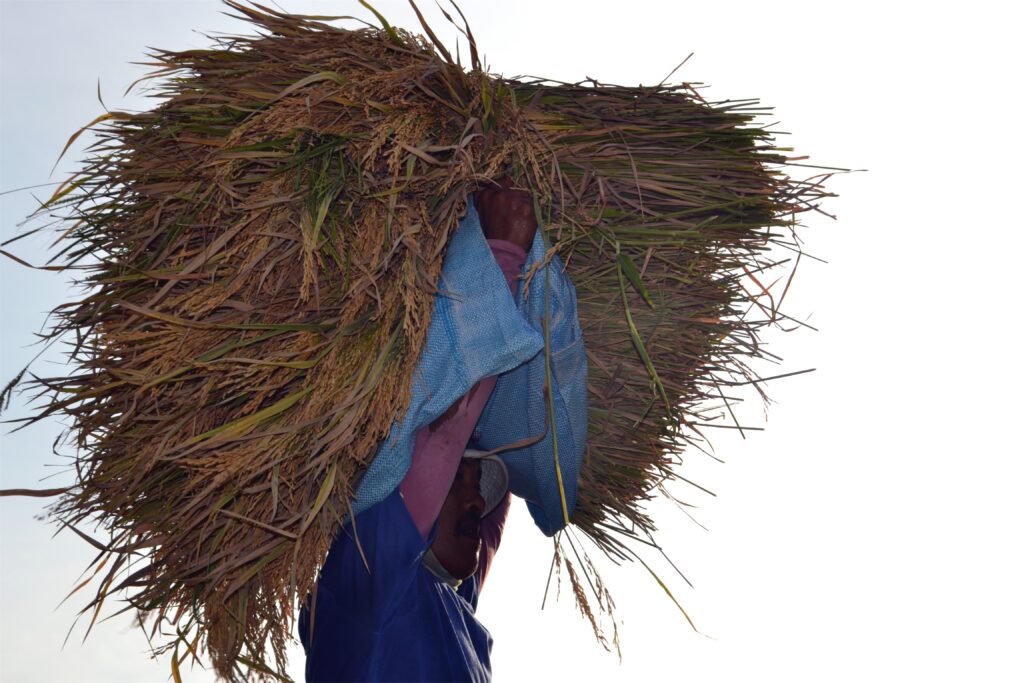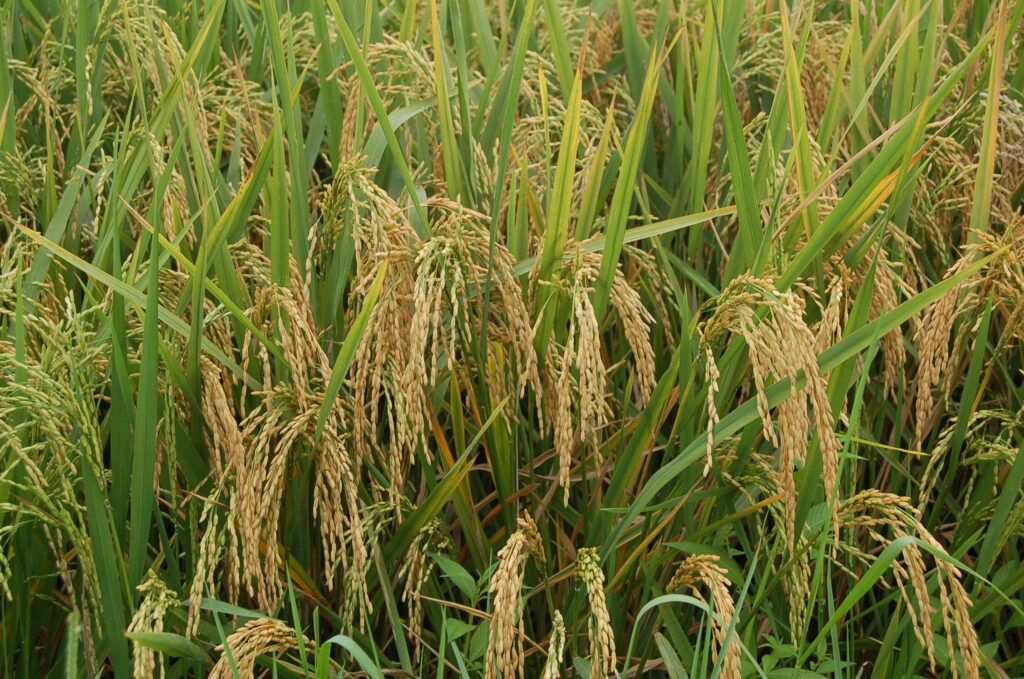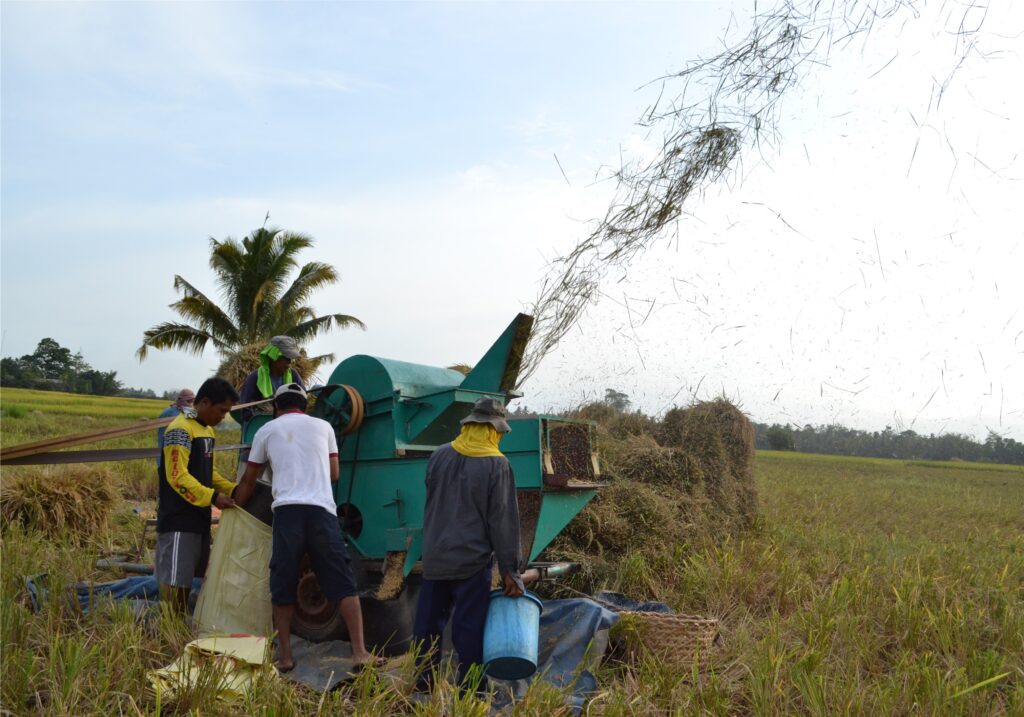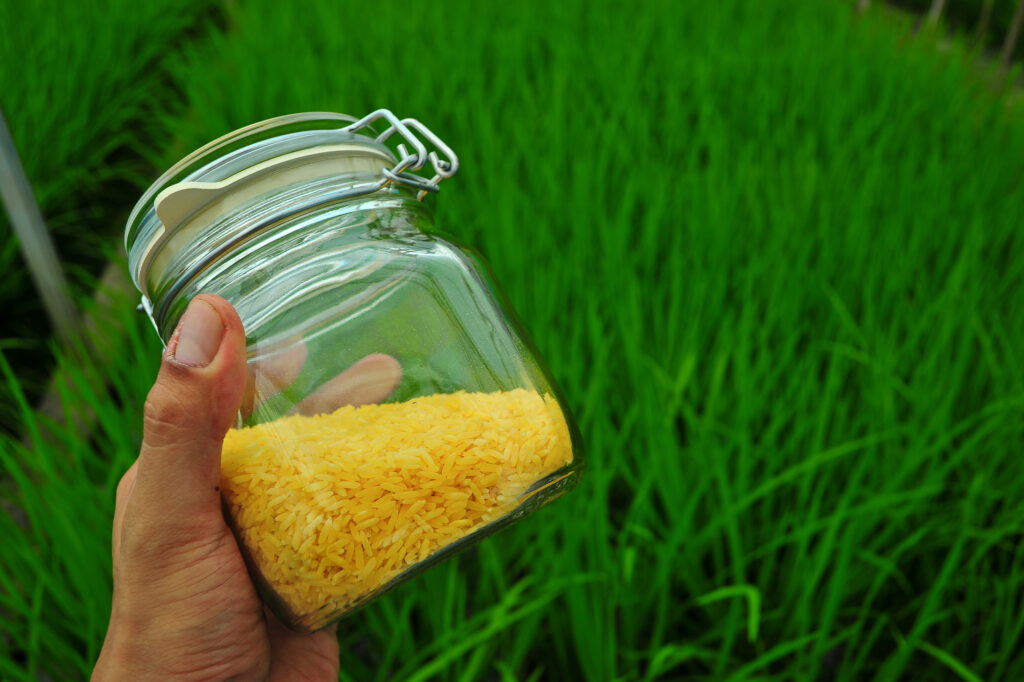Text and Photos by Henrylito D. Tacio
Additional photo: IRRI
How does golden rice taste?
During the inauguration of the Crop Biotechnology Center (CBC) at the Philippine Rice Research Institute (PhilRice) last September 30, external stakeholders finally had a taste of the vitamin A-enriched rice.
Participants sampled the white rice – the conventional background of golden rice and widely planted and familiar variety among farmers and consumers – and cleansed their palate with water before tasting golden rice.
Agriculture Secretary William Dar set aside the white rice, remarking that he is in favor of golden rice.
“If only this was available when I was still a kid, I would have been healthier. But now, with its presence, I can set aside this (white rice) in favor of golden rice. This will make me healthier and become younger again.” he said.
In his speech, Dar highlighted the milestone approval of golden rice, which aims to complement current interventions to address the vitamin A deficiency prevalent in children and pregnant women.
“We are the first country to approve golden rice for commercialization. As such, the rest of the world will be looking back on our experience with it before they join the bandwagon. As golden rice can now be commercially planted in the Philippines, we aim to complement current interventions to address malnutrition among children and pregnant women due to Vitamin A deficiency,” Dar said.

Carrying rice 
During the launching of golden rice, among those who attended was Dr. Micaela S. Violago, representative of the Second Congressional District Nueva Ecija. An ophthalmologist, she commended the nutritional benefit that golden rice could provide, especially it’s significant
contribution of vitamin A in the diet, which will help vulnerable populations.
Congresswoman Violago also encourages farmers and consumers to support golden rice.
“The smell ay parang pareho lang na mabango, the taste is almost the same but I think golden rice is much more delicious since I am imagining it contains margarine,” the congresswoman said.
“In terms of its benefits, since I’m a doctor especially vitamin A which golden rice address, as an ophthalmologist, I think it has more benefits and you don’t have to have children take vitamins. We support and encourage that farmers and the citizens will accept golden rice,” she added.
White rice and golden rice, she pointed out, have the same taste. However, she also encouraged switching white rice to golden rice as it will add health benefits for those who need it most.
Ryan G. Bedford, agricultural attaché of the US Embassy, was also present during the launch. He underscored the importance of biotechnology as the development
of Golden Rice could bring nutritious food that could help address vitamin A deficiency (VAD).
“The development of golden rice demonstrates how biotechnology can add nutrition to a widely consumed food and help to address vitamin A deficiency among vulnerable populations,” he said. “I couldn’t help myself and I ate all of it. It is great. I am a fan and I will feed it to my two daughters.”
A “rice that could save a million lives a year,” so said Swiss plant researcher Ingo Potrykus said of golden rice in 2000. Early this year, a biosafety permit was issued by government regulators, thus paving the way for the rice to be grown by farmers across the country.
The permit stipulates that golden rice has “undergone satisfactory biosafety assessment pursuant to Department of Science and Technology, Department of Agriculture, Department of Environment and Natural Resources, Department of Health, and Department of Interior and Local Government Joint Department Circular No. 1, Series of 2016.”
Of the issuance of the permit, Dr. Jean Balie, director-general of the Laguna-based International Rice Research Institute, said, “This milestone puts the Philippines at the global forefront in leveraging agriculture research to address the issues of malnutrition and related health impacts in a safe and sustainable way.”
Golden rice is a type of rice that contains beta carotene (pro-vitamin A, a plant pigment that the body converts into vitamin A as needed). This compound is what gives this grain its yellow-orange or golden color, hence its name.
Golden rice is a production of biotechnology, particularly genetic engineering. “While ordinary rice does produce beta-carotene, it is not found in the grain,” IRRI explained. “Thus, scientists used genetic engineering to add the compound to the grain – a minor tweak that improved the grain’s nutritive value.”
The beta-carotene in golden rice, which was made possible by the addition of two new enzymes, is identical to the beta-carotene found in green leafy (malunggay, for instance) and yellow-colored vegetables (carrot and squash), orange-colored fruits (mango and papaya), and even in many vitamin supplements and food ingredients.
While golden rice is an enhanced version of ordinary rice, it comes without any additional cost or difference in taste.
“While golden rice is expected to cost and taste the same as regular rice, its beta-carotene content makes it a valuable asset in the battle against vitamin A deficiency (VAD),” IRRI said. Vitamin A is an essential micronutrient for growth, development, and keeping the body’s visual and immune systems healthy.

Threshng rice 
Golden rice (Photo from IRRI)
VAD is one of the most important issues in terms of global public health, according to the World Health Organization (WHO). VAD weakens the body’s resistance to diseases and infections, causes blindness, and may even result in death if left untreated.
One million of the 1.5 million blind children in the world live in Asia, according to a WHO study.
“Each year, there are half a million new cases, 70 percent of which are due to vitamin A deficiency,” the authors wrote in 2001. At that time, the authors estimated that a child went blind somewhere in the world every minute. Worst of all, the study points out; the majority die within 12 months of losing their sight.
In the Philippines, VAD incidence continues to be a significant health issue affecting almost 17%, or 2 million children under the age of 5. This figure is based on the 2018 Expanded National Nutrition Survey of Food and Nutrition Research Institute of the Department of Science and Technology.
IRRI is very much aware that there are other approaches – such as vitamin A supplementation, food fortification, diet diversification, and promotion of optimal breastfeeding – which have made successes in combating VAD.
“However, more work is necessary to address the needs of certain target populations, especially those in remote areas,” IRRI stated. “Additionally, millions continue to suffer from VAD to this day.”
In Asia, where rice is a staple food, golden rice is one of the best ways to cut the prevalence of VAD. In the Philippines, Filipino consumes 114-120 kilograms of rice per capita per year on average.
A simulated analysis study suggests that beta-carotene-rich rice could improve vitamin A intake and could reduce the prevalence of VAD among women and children.
“It is clear that multiple approaches are required in fighting VAD. An additional tool in the toolbox such as golden rice – one that can be seamlessly integrated into the everyday lifestyles of even the poorest sectors of society – can be a concrete, sustainable solution to ensure proper nutrition,” IRRI said.
Just like other genetically engineered foods developed under strict regulation by experts, golden rice is safe to eat.
For Filipino farmers, the good news is: golden rice does not require any special cultivation practices. Like ordinary rice, golden rice “has the same yield and agronomic performance,” IRRI assured.
Russell Reinke, IRRI outcome theme leader of improving health through safe and nutritionally enhanced rice, said that “limited quantities” of golden rice seeds could be distributed to Filipino farmers in selected provinces next year.
For its part, PhilRice has started working with local partners to identify market- and program-based approaches for bringing golden rice first to selected communities with a high prevalence of VAD and other associated micronutrient deficiencies.
“We are committed to ensuring the highest quality of seed for farmers and a safe and nutritious food supply for all Filipinos,” said Dr. John de Leon, PhilRice executive director.

